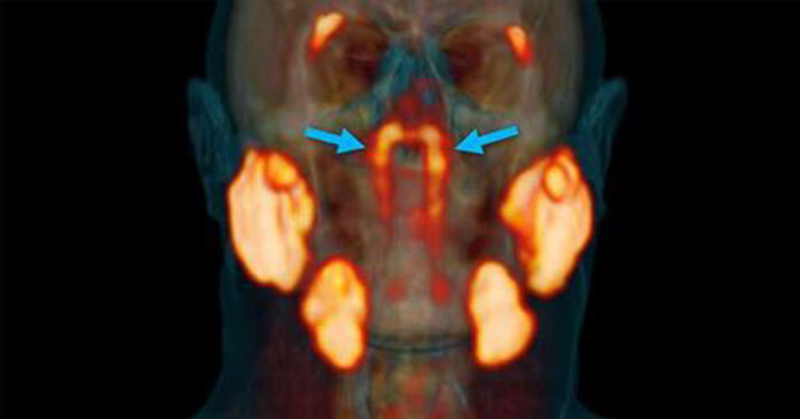Despite hundreds of years of observing and studying human anatomy, our bodies still have some surprises for us. Scientists recently discovered a new organ inside the human head – known now as the Tubarial Glands. This may just be the first discovery of its kind in about three hundred years. (1)
The Tubarial Glands
A Dutch research team has identified a pair of large salivary glands located in the small nook where the nasal cavity and throat meet. (1) The tubarial glands will join the list of the three already-known salivary glands (1):
- Near the ears
- Below the jaw
- Under the tongue
Though the findings still need to be confirmed, this is an exciting development.
Why Tubarial and Other Salivary Glands are Important
Salivary glands are an important part of the human anatomy. They create about one quart of spit every day, and this saliva has a variety of functions in our bodies (1):
- Lubricates the mouth
- Makes it easier to speak
- Allows us to swallow better
- Helps us taste
- Speeds up wound healing
- Fights germs
They are so important, in fact, that doctors take major precautions to avoid damaging the salivary glands when treating a patient with radiation. (1)
The Study
The researchers were not looking for a new organ when they discovered them but instead happened upon them while studying glands from those with prostate cancer. (1)
They were looking at a set of scans from a high-detail machine when they noticed two unfamiliar shapes in the center of the head. These were a pair of flat, two-inch-long spindly glands over the tubes that connect the ears to the throat. (2)
The team dissected the glands from two cadavers and discovered that they were highly similar to those found below the tongue. They were hooked up to large draining ducts, which tells us that perhaps they are responsible for transporting fluid from one place to another. (2)
Why Are We Only Discover Tubarial Glands Now?
Of course, many anatomists are curious as to how no one has never noticed them before. According to Dutch radiation oncologist Dr. Wouter Vogel, it is primarily due to their location. (1)
“the location is not very accessible, and you need very sensitive imaging to detect it,” he explains. (1)
These glands are hidden up under the base of the skull, whereas the other salivary glands are much closer to the surface of the skin. They can be felt from the outside, however, the tubarial glands cannot be. (1)
What This Means
Scientists are shocked, how could we possibly discover a new organ in the human body that we didn’t already identify? That being said, it has the potential to affect the study of diseases. (2)
Dr. Vogel says that this may explain why patients who have undergone radiation therapy for head and neck cancers have chronic dry mouth and swallowing problems afterward. No one knew they were there, so they didn’t know to avoid them. (1)
University of Pennsylvania radiologist Dr. Alvand Hassankhani cautions against calling them new organs just yet. He says there are some 1,000 minor salivary glands across the lining of the mouth and throat. They are smaller and much tougher to find through imaging or scanning than the three major glands. The tubarial glands could be one of those, and the researchers just came upon a better way to image a set of minor glands. (1)
What Happens Next
Bigger, more diverse studies will have to be done than this one who’s goal is specifically to learn more about the tubarial glands. (1)
Though it will be some time before we know whether or not these are truly new organs, they do hold exciting prospects for changing the way we treat certain cancers and diseases.
Keep Reading: 21-year-old experiences heart failure after drinking four energy drinks a day for two years: case study
Sources
- “Doctors May Have Found Secretive New Organs in the Center of Your Head.” NY Times. Katherine J. Wu. October 19, 2020.
- “The tubarial salivary glands: A potential new organ at risk for radiotherapy.” Science Direct. Matthijs H.Valstar, et al. January 2021.

